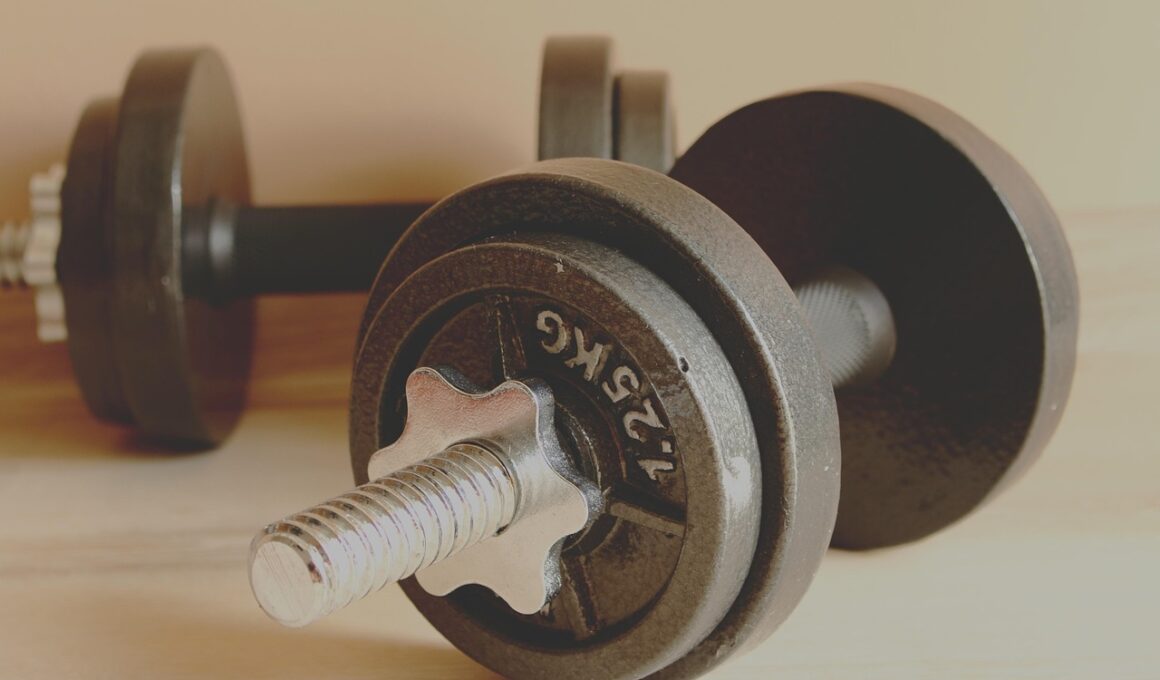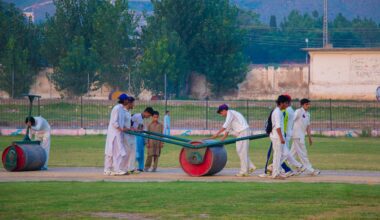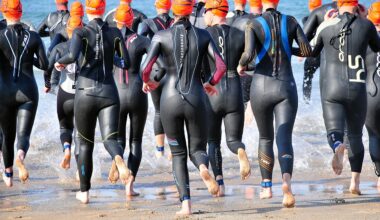Early Bodybuilding Competitions Around the World: A Global Perspective
The history of bodybuilding competitions is as rich and diverse as the culture of the world itself. In the early 20th century, bodybuilding began to gain popularity, leading to the establishment of formal competitions. One of the first notable events was held in 1901, known as the “Great Competition,” organized by Eugene Sandow in London. Sandow, often regarded as the father of modern bodybuilding, showcased his physique, and the event attracted numerous participants. Competitions similarly emerged in the United States, with events often featuring impressive displays of strength, creativity, and aesthetics. Notably, bodybuilding competitions focused not only on muscular size but also on symmetry and presentation. As participants posed and demonstrated their strength, judges evaluated them based on several criteria. These competitions laid the groundwork for the structured events we see today, emphasizing discipline, dedication, and hard work. Over time, events in different countries began to reflect their unique cultural values, thus creating a rich tapestry of global bodybuilding traditions. Today, these earlier competitions can be seen as the cornerstone for the booming international bodybuilding community we have now.
The Rise of International Bodybuilding Events
As bodybuilding gained traction in different parts of the world, competitions began to evolve and attract a wider audience. In the 1930s, European nations such as Germany and France started organizing their own pioneering events. These competitions influenced other countries, spurring them to establish similar matches that celebrated physical culture. The 1940s and 50s marked a defining moment for bodybuilding, as the iconic Mr. Olympia competition launched in 1965, revolutionizing the approachable nature of the sport. This competition attracted attention from fitness enthusiasts globally, making bodybuilding a more mainstream pursuit. Various nations began to hold local and national contests, leading to the rise of professional organizations that oversaw these competitions. Countries invested in training facilities, gyms, and coaching to enhance their athletes’ skills on a global stage. In no time, bodybuilders amassed legacies through tours and contests across continents, showcasing their talents and building a sense of camaraderie internationally. The sport transitioned from local displays of strength to grand spectacles, creating a rich environment that supported athletes while promoting a healthy lifestyle and community dedication.
Bodybuilding competitions weren’t just about muscle; they became increasingly about presentation, elegance, and athleticism. As the 1960s progressed, competitors placed a more significant emphasis on aesthetic appeal, further diversifying the competition categories. Events began introducing therapeutic practices, nutrition plans, and weight management systems to optimize athlete performance. Notably, during this time, bodybuilding started capturing the interest of other cultures too, leading to collaborative events. In the late 1970s, bodybuilding competitions began to proliferate across Asia, with events like the Asian Championships empowering a new wave of athletes. Thousands competed, blending cultural history and physique into a unique event showcasing local talent. The presence of female competitors began emerging, supporting gender inclusivity in the sport; this dynamic further attracted more spectators. Similar competitions developed in Africa and South America, creating an environment where diverse backgrounds coalesced and shared best practices in the sport. Traditional approaches combined with innovative techniques, illuminating a colorful history as participating nations celebrated their athletes. It was pivotal for solidarity, inspiring even more contestants to break into the international stage while also raising awareness about health and fitness education.
Global Impact and Cultural Significance
With the proliferation of bodybuilding competitions worldwide, the cultural significance of these events cannot be understated. They became essential platforms for artistic self-expression and showcasing local strength ideals, promoting physical fitness. The events often included various accompanying activities, such as workshops, lectures, and fitness clinics, adding educational value. Moreover, these competitions nurtured a fitness culture in regions where health awareness was previously limited. As athletes gained recognition, they inspired communities, particularly the youth, to embrace bodybuilding, fostering discipline, hard work, and goal-setting. Additionally, events infused competition with entertainment by incorporating performances and exhibitions effectively engaging the audience. These added layers contributed to the sport’s appeal and encouraged external businesses, sponsors, and organizations to invest in the growing trend of fitness lifestyles globally. Social media significantly impacted athlete marketing and promotion during this period, allowing competitors to reach wider audiences and share their journeys through stories, photographs, and videos. Consequently, the perception of bodybuilding transformed, eradicating stereotypes and attracting a fan base that celebrated the values of hard work and thrive as a global community.
Throughout the years, the influence of bodybuilding competitions has spread to various sectors, including fashion and the entertainment world. As some athletes transitioned into celebrities, it led to collaboration with designers and brands, merging bodybuilding with lifestyle marketing. Films and documentaries showcasing world-renowned bodybuilders contributed to increasing public interest, further exemplifying how these competitions shaped societal views toward fitness. In the 1990s, competitions like Mr. Olympia flourished, featuring global talents and popularizing bodybuilding on television. In turn, this accessibility captivated new participants and enthusiasts who may not have previously considered entering the sport. It also led to the growth of diverse federations offering various categories, paving the way for more inclusive representation. The rise of wrestlers and mixed martial artists reciprocated influences in theatrics and performance art, producing a fusion of athletic excellence and entertainment. Even today, the reverberations of early competitions are felt, as more people than ever engage in fitness culture driven by admiration for the original bodybuilders. Each year, competitions celebrate the spirit of competition while ensuring traditions honor those who laid the foundation for modern bodybuilding.
The Legacy of Early Bodybuilding Competitions
Reflecting on the history of bodybuilding competitions speaks volumes about the significant impact they have had on fitness culture. From their modest beginnings, these events have shaped the narratives around body image, strength, and achievement. Athletes today stand on the shoulders of giants, benefiting from the groundwork laid in those early competitions where integrity and passion prevailed. Moreover, competition structures continue to evolve, keeping pace with modern demands, while ensuring that ethical practices and fair judgment remain paramount. Local competitions may have small audiences, yet they form a triangle representing tradition, contemporary approach, and the desire for international recognition. Today’s athletes often train just as hard as their predecessors, pushing personal boundaries and achieving outstanding results. As a testament to the lasting legacy, current and emerging bodybuilders recognize the influence of early pioneers and strive for greatness on their journey. Stories of athletes triumphing over obstacles lay the foundation for motivation and competitive spirit. Hence, fitness enthusiasts globally uphold the same values cherished for generations, strengthening the bodybuilding community united by respect, discipline, and personal growth.
As we glance into the future of bodybuilding competitions, it will be vital to remember the lessons and accomplishments of early participants. These historical milestones set the stage for an inclusive approach striving to break barriers, honor diversity, and explore innovative pathways. With advancing technology and increased awareness surrounding fitness, bodybuilding competitions must adapt further to meet the needs of enthusiasts and support inclusivity. Promoting women’s divisions, adaptive athletes, and underrepresented populations will ensure growth and progress, showcasing the ever-evolving culture surrounding the sport. This passion has the potential to ignite more awareness about wellness, fostering healthy lifestyles among the next generation. Furthermore, collaboration with health professionals, scientists, and nutritionists will enhance participant training and performance while preserving health as a priority within competitive environments. As bodybuilding is etched into popular culture, the unifying narratives of struggle, success, and transformation should remain prolific. Moving forward, the global bodybuilding community must honor the rich histories while employing progressive methodologies, ensuring the legacy of early competitions continues to inspire generations to come.
In conclusion, the global journey of bodybuilding competitions emphasizes a rich and intricate history filled with passionate athletes, cultural significance, and ongoing evolution. The beginning of organized competitions marked the rise of a movement that has transcended borders and united individuals through a shared love for fitness and strength. From Eugene Sandow’s early efforts to the vibrant competition scene we see today, each chapter of this journey contributes to the profound influence these events have on society. The importance of historical context goes beyond nostalgia, prompting current competitors to appreciate their heritage while aspiring to push boundaries further. It has been a catalyst for social change and the promotion of health and wellness across various demographics. The ethos of dedication, resilience, and camaraderie binds participants to pursue greatness, irrespective of their starting point or journey. Finally, building upon the legacy of predecessors, it becomes collectively important to cultivate an environment where future generations can thrive, succeed, and find purpose in fitness culture. Bodybuilding competitions are far more than contests; they symbolize hard work, perseverance, and the human spirit’s relentless desire to achieve.


